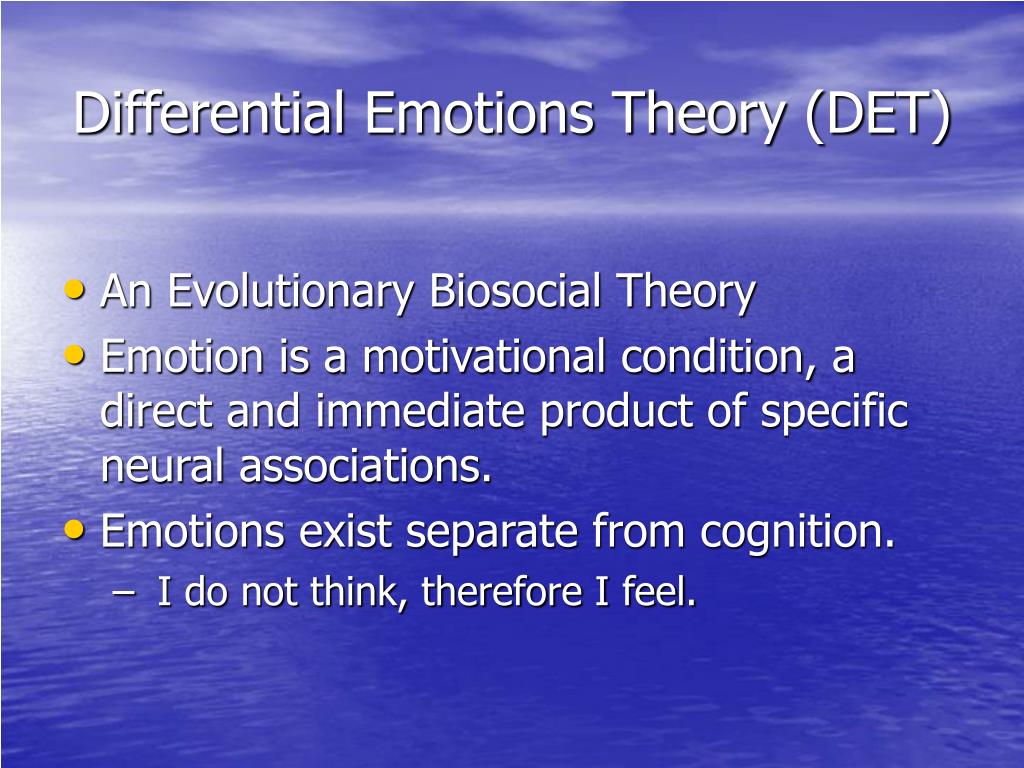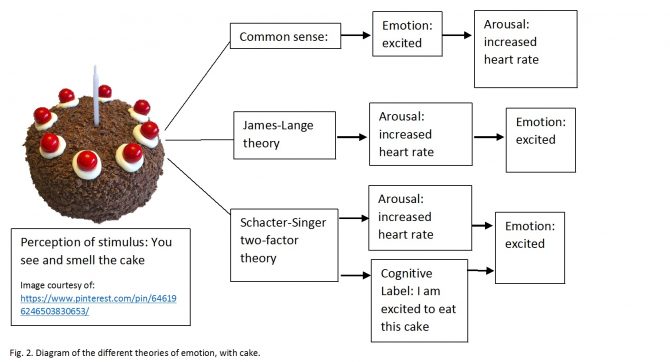

According to the Schacter–Singer theory, physiological arousal is cognitively interpreted based on environmental context this process culminates in emotional experience.

According to the Schachter–Singer theory of emotion (also known as two-factor theory), emotions are the result of the interaction between two factors: physiological arousal and cognition.
 According to the Cannon–Bard theory, when you see a venomous snake, you feel fear at exactly the same time that your autonomic nervous system responds. In contrast, the Cannon–Bard theory argues that physiological arousal and emotional experience occur simultaneously, yet independently. The Cannon–Bard theory of emotion was developed in response to the James-Lange theory, which proposes that emotions arise from physical arousal. The James–Lange theory of emotion asserts that emotions arise as a result of physiological arousal -i.e., that the self-perception of changes in the body produces an emotional experience. Practice Exam 4 P/S Section Passage 6 Question 31 Sample Test P/S Section Passage 5 Question 23 Why do we believe that there are universal emotions What you would actually experience, then, would be the feeling of fear. These cognitive interpretations, how a person labels and understands what they are experiencing, are formed based on the person’s past experiences.įor example, if you were to see a venomous snake in your backyard, the Schachter–Singer theory argues that the snake would elicit sympathetic nervous system activation (physiological arousal) that would be cognitively labeled as fear (cognition) based on the context. More specifically, this theory claims that physiological arousal is cognitively interpreted within the context of each situation, which ultimately produces the emotional experience. According to the Schacter–Singer theory, emotion results from the interaction between two factors: physiological arousal and cognition. The Schachter–Singer theory views emotion as the result of the interaction between two factors: physiological arousal and cognition. It is in the cortex where such information is associated with conditioned processes, which in turn determine the direction of the response and stimulate the thalamic processes. An individual’s sensory organs take in an emotional stimulus, and then information about that stimulus is relayed to the cerebral cortex. The optic thalamus, in particular, is a region that contains the neural organizations for different emotional expressions. Even though they occur at the same time, your emotional reaction and your physiological reaction would be separate and independent.Īccording to the Cannon–Bard theory, emotional expression results from activation of the subcortical centers of the brain. This theory posits that when you see a venomous snake in your backyard, you feel fear at exactly the same time that your body initiates its physiological fight-or-flight response.
According to the Cannon–Bard theory, when you see a venomous snake, you feel fear at exactly the same time that your autonomic nervous system responds. In contrast, the Cannon–Bard theory argues that physiological arousal and emotional experience occur simultaneously, yet independently. The Cannon–Bard theory of emotion was developed in response to the James-Lange theory, which proposes that emotions arise from physical arousal. The James–Lange theory of emotion asserts that emotions arise as a result of physiological arousal -i.e., that the self-perception of changes in the body produces an emotional experience. Practice Exam 4 P/S Section Passage 6 Question 31 Sample Test P/S Section Passage 5 Question 23 Why do we believe that there are universal emotions What you would actually experience, then, would be the feeling of fear. These cognitive interpretations, how a person labels and understands what they are experiencing, are formed based on the person’s past experiences.įor example, if you were to see a venomous snake in your backyard, the Schachter–Singer theory argues that the snake would elicit sympathetic nervous system activation (physiological arousal) that would be cognitively labeled as fear (cognition) based on the context. More specifically, this theory claims that physiological arousal is cognitively interpreted within the context of each situation, which ultimately produces the emotional experience. According to the Schacter–Singer theory, emotion results from the interaction between two factors: physiological arousal and cognition. The Schachter–Singer theory views emotion as the result of the interaction between two factors: physiological arousal and cognition. It is in the cortex where such information is associated with conditioned processes, which in turn determine the direction of the response and stimulate the thalamic processes. An individual’s sensory organs take in an emotional stimulus, and then information about that stimulus is relayed to the cerebral cortex. The optic thalamus, in particular, is a region that contains the neural organizations for different emotional expressions. Even though they occur at the same time, your emotional reaction and your physiological reaction would be separate and independent.Īccording to the Cannon–Bard theory, emotional expression results from activation of the subcortical centers of the brain. This theory posits that when you see a venomous snake in your backyard, you feel fear at exactly the same time that your body initiates its physiological fight-or-flight response.







 0 kommentar(er)
0 kommentar(er)
